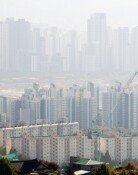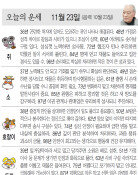Vibrant coastal humanities, alive before your eyes
Vibrant coastal humanities, alive before your eyes
Posted November. 23, 2024 07:27,
Updated November. 23, 2024 07:27

Until the 1960s, Yeonpyeong Island, 80 kilometers west of Incheon City, was teeming with croakers. Every April and May, the seas around the island overflowed with fish, and the croakers’ resonant “koo-ook koo-ook” calls filled the air, often keeping people awake at night. Tens of thousands of sailors flocked to the small island, chasing dreams of a bountiful catch. Money from selling croakers flooded the island, creating a boom in stores and entertainment establishments, rivaling Seoul’s Myeongdong district. Tales of this "golden age" include sayings such as, “Yeonpyeong Fisheries Cooperative’s daily cash intake exceeded that of the Bank of Korea” and “It’s better to be the head of Yeonpyeong Fisheries Cooperative than the governor of Hwanghae Province.”
However, as croaker catches declined, the prosperity faded. Blue crab fishing replaced croaker but could not revive the past vitality. With inter-Korean relations strained, Yeonpyeong Island has become a place where the tension of division is palpable. The author, who has conducted field studies on Yeonpyeong, describes the transformation: “Yeonpyeong Island is now a military fortress. Half of the residents are soldiers and their families.”
A curator from the National Folk Museum captures the stories of fish living in the sea and the people who make the sea their livelihood in a book that is both “Fish Humanities” and “Coastal Humanities.” The book vividly details field investigations across Korea’s seas, from the East Sea to the Yellow Sea, the South Sea, and Jeju Island, accompanied by interviews with local residents. As the types of fish caught change, so too do the coastal communities, albeit subtly. Surrounded on three sides by the sea, Korea boasts diverse fish species, and the joys and sorrows of coastal residents are as varied and rich as the marine life itself.
사지원 기자 4g1@donga.com
Headline News
- Kim Jong Un: Negotiations with U.S. have gone to the limit
- Yoon’s support rating remains at 20% for two weeks in a row
- SEC chair known for cryptocurrency regulations announces resignation
- Medical student scores 398 on CSAT, signaling ‘applications for reach schools’
- Noh Kyung-eun to play up to three more years with SSG







